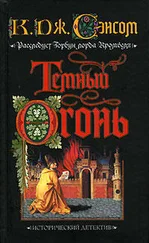4 . Neville, p. 70.
5 . Russell, F. W., Kett’s Rebellion in Norfolk (1859), p. 102.
6 . Greenwood, Aubrey R., A Study of the Rebel Petitions of 1549 , University of Manchester PhD (1990); Whittle, J., ‘Lords and Tenants in Kett’s Rebellion 1549’, Past & Present , no. 207 (May 2010), pp. 3–51.
7 . Greenwood, pp. 320–1.
8 . Whittle, p. 23.
9 . Ibid., p. 26.
10 . Ibid., p. 41.
11 . Greenwood, pp. 320–1.
Administration of the Camp
1 . Whittle, pp. 37–8.
2 . Neville, p. 18.
3 . Land, p. 20.
4 . Neville, p. 17.
5 . Sotherton, p. 84.
6 . Ibid.
7 . Greenwood, p. 327.
8 . Neville, pp. 25–6; Sotherton, p. 84.
9 . Russell, p. 47.
10 . Blomefield, F., An Essay Towards a Topographical History of the County of Norfolk (1739–75) , chapter 2.5 18/29, British History Online edition.
11 . Greenwood, p. 306.
12 . Neville, p. 65.
13 . Ibid., p. 75. (Land quotes Sotherton as mentioning Miles’s name in this connection, but this is not in the Journal of Medieval and Renaissance Studies edition.)
14 . Sotherton, p. 87; Jary, L. R., Rewriting the Rebellion (2018), Part 2, ‘Weapons’.
Relations with Norwich
1 . Sotherton, p. 83.
2 . Ibid., p. 85.
3 . Jary, L. R., Through Ancient Gates: the Medieval Defences of Norwich (2011) for a discussion of the walls.
4 . Sotherton, p. 82.
5 . Neville, pp. 20–1. (Parker’s visit must have been on 18–19 July, since he spoke at the high scaffold round the Oak on a Friday. This could not have been the 12th, since that was the date of the rebels’ arrival; and by the 26th Norwich had been occupied.)
6 . Greenwood, p. 305.
Financing the Camp
1 . MacCulloch, D., ‘Kett’s Rebellion in Context: A Rejoinder’, in Slack, P. (ed.), Rebellion, Popular Protest and the Social Order in Early Modern England (1984), p. 75; Fletcher and MacCulloch, p. 85; MacCulloch, Thomas Cranmer , pp. 437, 451–2, 456; Skidmore, pp. 130–1. This would be a fascinating area for further research. For example, it would be interesting to see whether his flocks were raided during the Rebellion.
2 . Skidmore, p. 131.
Reimagining Life in the Camp
1 . Neville, p. 19.
2 . Ibid., p. 43.
3 . Ibid., p. 27.
4 . Ibid., p. 51.
5 . Sotherton, p. 92.
6 . Neville, pp. 18–23.
The ‘Prophets’
1 . Morehouse, G., The Pilgrimage of Grace (2002), pp. 40–1, 72.
2 . Sotherton, p. 97.
3 . Dawson, J., John Knox (2015), chapter 3.
4 . Horst, I. B., The Radical Brethren (1972), chapter 3.
5 . Ibid., pp. 103–7.
6 . Holinshed, R., Chronicle (1577), The Holinshed Shared Project (http://english.nsms.ox.ac.uk/holinshed/ ), Vol. 4 (1613), p. 69.
12–21 July: Days of Hope
1 . Greenwood, p. 211.
2 . Land, pp. 63–6, reproduces the demands.
3 . Greenwood, p. 211.
4 . Land, chapter 11; Cornwall, p. 145.
5 . Greenwood, p. 143; Wood, p. 64; Beer, B., Rebellion and Riot: Popular Disorder in England During the Reign of Edward VI (2005), p. 111.
6 . My argument is largely based on that of Greenwood, pp. 214–36.
7 . Shagan, E. H., ‘Protector Somerset and the 1549 Rebellions: New Sources and New Perspectives’, English Historical Review (February 1999); Bush, M. L., ‘Protector Somerset and the 1549 Rebellions: A Post-Revision Questioned’, EHR (February 2000); and Bernard, G. W, ‘New Perspectives or Old Complexities?’, EHR (February 2000).
8 . Shagan, op. cit., Letter 3; op. cit., p. 58; Bernard, op. cit., p. 116.
9 . Shagan, op. cit., pp. 55–7.
10 . Sotherton, p. 85.
11 . Neville, p. 31.
12 . Ibid.
13 . Sotherton, p. 85.
Armed Conflicts: 21 July to 1 August
1 . Southerton, p. 85.
2 . Russell, pp. 78–80.
3 . Sotherton, p. 87.
4 . Russell, p. 81.
5 . Neville, pp. 40–1.
6 . Land, chapter 16, is a good summary of attempts to spread the rebellion.
7 . Jones, pp. 264–73.
8 . Hoare, A. and A., Mystery, Drama, Scandal and Ruin – Exploring the Lives of Some Families Whose Coats of Arms Were Found at Number Nine, Town Green Wymondham (2018).
9 . Land, chapter 14. Land is good on the military aspects.
10 . Sotherton, pp. 89–90.
11 . Ibid.
12 . Ibid. The account of the battle is based on Sotherton, pp. 89–91, and Land, chapter 15.
13 . Groves, R., Rebels’ Oak (1947), p. 57.
Growing Isolation: 1–24 August
1 . Sotherton, pp. 91–3.
2 . Jones, pp. 163–4.
The Coming of Warwick’s Army
1 . Miller, G. J., Tudor Mercenaries and Auxiliaries 1485–1547 (1980), esp. p. 44.
2 . Jary, L. R., Part 2, ‘Destruction of the North Wall Gates’, has a very useful discussion of this.
3 . Sotherton, p. 95.
4 . Carter, A., ‘The Site of Dussindale’, Norfolk Archaeology Vol. XXXIX, Part 1 (1984), pp. 54–62.
5 . Sotherton, p. 98.
6 . Jary, L. R., Part 4.
7 . Neville, p. 70.
The Final Battles: 24–27 August
1 . Description of events between 24 and 26 August is based on Sotherton, pp. 92–7.
2 . Somerset to Hoby, 15.9.1549, quoted in Russell, p. 214.
3 . Jary, L. R., Part 3, on which my discussion of the Battle of Dussindale is largely based.
4 . Neville, p. 71.
5 . Sotherton, p. 98.
6 . Russell, p. 144, referencing journal of Edward VI.
7 . Neville, pp. 71–2.
8 . Sotherton, p. 99.
9 . Neville, pp. 73–4.
The Aftermath
1 . Neville, p. 76.
2 . Holinshed Shared texts, Vol. IV, p. 1613, 69.
3 . Neville, pp. 75–6.
4 . Whittle, Part V.
5 . Land, p. 126.
6 . This account based on Loach, J., Edward VI (1999), pp. 105–6.
7 . Skidmore, p. 152.
8 . Wood (2007), p. 77.
9 . Ibid., p. 78.
10 . Ibid., chapter 5.
Until comparatively recently, little was written about the rebellions of 1549 as a whole or about the Western Rebellion; there has been more on Kett’s Rebellion, but not that much.
As Diarmaid MacCulloch has said, much of what was written about Kett’s Rebellion before the 1970s was derived from the only contemporary narrative, The Commoysion in Norfolk by Nicholas Sotherton. Written in the immediate aftermath of the rebellion, it is very short, and viscerally opposed to the rebels.
The next narrative to appear was Alexander Neville’s Norfolk Furies (1575), translated from the Latin by Richard Woods in 1615. Neville was secretary to Archbishop Matthew Parker, who briefly visited the camp in 1549. Neville’s opposition to the rebels is ferocious, but a lot of useful information can be garnered from his longer account. Holinshed’s Chronicle (1577) discusses the rebellion but adds little to Neville.
Almost two hundred years passed before the next discussion of the rebellion, in Francis Blomefield’s An Essay Towards a Topographical History of the County of Norfolk (1739–75) . Again, it adds little.
Almost another century passed until the first ‘stand-alone’ history, F. W. Russell’s Kett’s Rebellion in Norfolk , was published in 1859. It is a first-rate work of scholarship, incorporating many new sources unearthed by Russell, though not very readable now. Russell was the first writer to show at least a little sympathy for the rebels.
In the first half of the twentieth century two writers brought a socialist perspective to the rebellion. Joseph Clayton’s Robert Kett and the Norfolk Rising (1912) effectively takes the existing story and turns it on its head, the rebels being good and the landlords bad. It is the first book that is written to be accessible to the general reader. Short, but thoroughly researched and with useful insights, is R. Groves’ Rebels’ Oak (1947).
Читать дальше






![К Сэнсом - Стенание [другой перевод]](/books/432043/k-sensom-stenanie-drugoj-perevod-thumb.webp)



